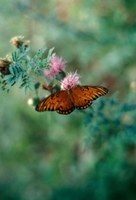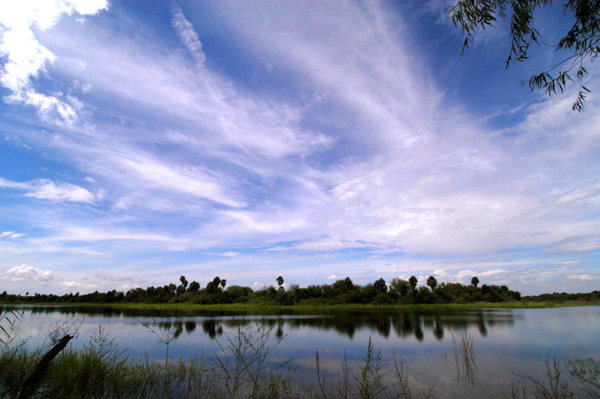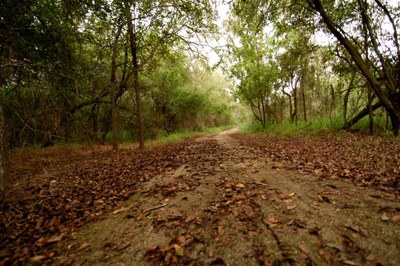Nature
The land and the river

- Gulf fritillary
The Rio Grande shaped the land alongside it. Over time, the river carved and then abandoned channels. Floods nourished the soil and provided life-giving water for plants and wildlife.
Today, dams control the flow of the river, which has made the land surrounding it more arid.
Humans changed the land as well. Much of the original native brush land in the lower Rio Grande Valley is now in agricultural or urban use. Humans have cleared most of the habitat along the river on the U.S. side.
Only scattered fragments of the original habitat remain. Those fragments have some of the highest biodiversity in the U.S. today.
Wildlife Corridor
To protect that biodiversity, Congress authorized a Wildlife Corridor in 1978. The corridor allows animals to move freely along these riparian (on the riverbank) habitats.
In addition to the state park, the U.S. Fish and Wildlife Service maintains several properties along the floodplain as part of the Wildlife Corridor.
Refuge
 The state park serves as a habitat “island,” providing refuge for wildlife and native plants.
The state park serves as a habitat “island,” providing refuge for wildlife and native plants.
Wildlife
Bentsen has a mix of wetland, brush, riparian and woodland habitats. This makes it one of the best places in the U.S. to see birds and other wildlife more commonly found in the subtropics of northern Mexico. Species found here include Common Pauraque, Groove-billed Ani, javelina and Coues’ rice rat.
Many other types of wildlife take advantage of the native food, water and shelter they find in the park. You’ll see butterflies, dragonflies and other insects wherever you turn. Other mammals, reptiles, amphibians and fish thrive here, as well. You might even see a bobcat!
Coues’ rice rat
These rats are a threatened species in Texas. They live only in the Rio Grande Valley and south into Mexico.
Coues’ rice rats have short, reddish-yellow fur and buff-colored underparts. They prefer habitat in cattail-bulrush marshes and aquatic, grassy zones near resacas (oxbow lakes).
Learn more about birding here:
- Listing of bird sightings in 2018, from the Bentsen-Rio Grande Valley State Park eBird Tracker
- Bird Checklist for Bentsen-Rio Grande Valley State Park
Native plants
Bentsen preserves some of the last examples of native plants along the Rio Grande. Some of them are native to the subtropics and aren’t found anywhere else in North America. This includes trees such as the Montezuma bald cypress, Sabal palm and Texas wild olive.
Due to flood control on the river, the last remnants of riparian woodlands are slowly disappearing. The land is reverting to drier shrub land species. TPWD continues to restore and preserve this disappearing habitat.
Trees in the woodlands of the park include mesquite, sugar hackberry, granjeno, cedar elm, retama, Texas ebony and anacua. Beware: Many trees and shrubs here have thorns!
World Birding Center

- Green Jay
Bentsen-Rio Grande Valley is the headquarters of the World Birding Center.
The World Birding Center is a partnership between the Texas Parks and Wildlife Department, Rio Grande Valley communities, and the U.S. Fish and Wildlife Service. It consists of a network of nine distinct birding sites along a 120-mile historic river road. Each site is sponsored by one of the Valley’s nine partner communities.
The partners work to increase awareness and appreciation of birds and other wildlife and their habitats along the lower Rio Grande.
Learn more by downloading Interpretive Guide to State Parks of the World Birding Center | PDF.


